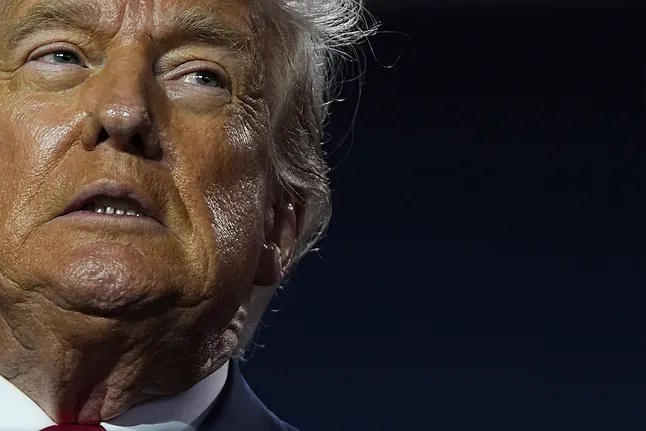The President of the United States, Donald Trump, will visit the headquarters of the Federal Reserve in Washington on Thursday. The White House announced this surprise visit on the brink of midnight, revealing the next day's agenda. The meeting is laden with symbolism and importance as it occurs during one of the most delicate moments in the institution's history. The White House is attempting to remove its president, Jerome Powell, either by persuasion or force. This visit also comes amidst controversy manufactured by the government regarding overspending on a massive renovation of the two main buildings, with accusations that Powell not only wasted over $2.5 billion of taxpayers' money but also lied to Congress during a hearing on this matter.
Some of Trump's key advisors, including James Blair, Deputy Chief of Staff; Russ Vought, Director of the Office of Management and Budget who initiated the formal inquiry into the renovation costs; and Bill Pulte, a vocal critic of Powell who heads the Federal Housing Finance Agency, have recently demanded personal oversight of the renovation project. The Fed declined, prompting the president to decide to oversee it himself, accompanied by his entourage and cameras, echoing his team's accusations of wasteful spending on marble and luxury elevators.
Tomorrow will mark the third visit by a president to the Fed. The first was Franklin Delano Roosevelt in 1938, the year of its inauguration. Since its establishment in 1913, the Federal Reserve Board met at the U.S. Treasury facilities on Pennsylvania Avenue, with its staff spread across three different locations in the capital city. With the approval of the Banking Act of 1935, control of the Federal Reserve System was centralized under the authority of the Board of Governors, granting it independence it previously lacked, as even the Treasury Secretary was part of the small group making decisions. This act also authorized a main building, later renamed in 1982 in honor of Marriner S. Eccles, who chaired the Federal Reserve from 1934 to 1948.
The second president to visit was Gerald Ford in 1975, attending the swearing-in of Phil C. Jackson to the board of governors. Although the president and Jackson were not acquainted, the Republican was closely associated with the then-Fed Chairman, Arthur Frank Burns, who held the record for White House visits: 48 in just two years after Nixon's resignation. Ford accepted Burns' recommendation and used the occasion to address a particularly sensitive issue at the time. Burns had criticized Nixon's trade policy favoring tariffs, the same president who appointed and confirmed him. Burns would later strongly criticize Jimmy Carter. For Ford, this was an inseparable part of the job. "The essence of the Federal Reserve System is independence: independence from both Congress and the President, as well as the individual independent thinking of each of its governors. I fully and firmly respect that independence," he stated. A sentiment that the current White House does not share at all.
The most recent president to visit the headquarters until today was George W. Bush when Ben Bernanke took office, who in his thank-you speech highlighted the rarity of a politician's presidency. Bush remarked that since its inception, "the Federal Reserve has contributed to the stability and growth of our country's economy. Worldwide, the Federal Reserve is a symbol of integrity and reliability. Its decisions determine our country's monetary policy, ensure a strong banking system, and help contain risks that may arise in our financial markets. The Federal Reserve's actions impact the lives of all Americans, and the Federal Reserve Chairman must be a leader of unquestionable credentials, good judgment, and impeccable conduct. Ben Bernanke meets these high standards and will be an exceptional Federal Reserve Chairman."
And now comes Trump, who in recent weeks has referred to Powell, appointed by him in his first term, as an "idiot," "always late," "stubborn as a mule," "incompetent," "clueless," and "terrible at his job." The President, who summoned his now adversary to his office two months ago, has demanded that Powell and his board lower interest rates, currently around 4%, to 1%. He also instructed them not to criticize tariffs or claim they endanger growth and employment.
He has also urged, both diplomatically and forcefully, for Powell to resign immediately to allow for a replacement. As the economist refuses, Trump threatens him with a congressional investigation and censure, using his ministers to pressure him by claiming that a "palace of Versailles" is being built, despite Powell's term ending next May. The White House has considered dismissal, but legal experts argue that it is not possible without solid cause, and the Supreme Court, gradually authorizing the dismantling of the administration, has indicated it would pose obstacles in this case.
Indeed, just this Wednesday, Treasury Secretary Scott Bessent, one of the more openly touted successors, reiterated that the President will appoint a replacement in December or January, after which the markets will pay more attention to the future leader of the institution than the outgoing expert. Commerce Secretary Howard Lutnick was even more explicit in an interview with Fox News, stating that Powell "has to go" and should "resign or be replaced."
"Our interest rates should be three points lower, saving us a trillion dollars a year (as a country). This stubborn Federal Reserve head just doesn't get it. He never did and never will. The Board should act, but they don't have the courage to do so!" Trump wrote on his social media platforms just a few hours ago, a very clear way to set the stage for the meeting.
